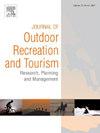Recreation and disarray: Analysis of disorder in U.S. national parks
IF 4.4
3区 管理学
Q1 HOSPITALITY, LEISURE, SPORT & TOURISM
Journal of Outdoor Recreation and Tourism-Research Planning and Management
Pub Date : 2025-08-06
DOI:10.1016/j.jort.2025.100936
引用次数: 0
Abstract
One of the best examples of balancing conservation with recreation-based tourism is the United States National Park System. With millions of visits per year in many parks, incidents of disorder are inevitable. Despite the limited amount of past literature examining more formal crime within national parks, to date, no studies have examined incidents of disorder or how these might affect recreation in these public spaces. This study examines over 74,000 incidents of disorder from 2000 to 2023 across four national parks using citation data from the Central Violations Bureau. These incidents were categorized and analyzed descriptively and longitudinally using autoregressive integrated moving average (ARIMA) models. The study finds that disorder is infrequent relative to visitation, with traffic-related citations comprising approximately 66 % of all incidents. In contrast, only about 5 % of citations were directly related to conservation or natural resources. These findings provide an empirical foundation for informing low-cost, prevention-oriented park management strategies.
Management implications
- -Long-term monitoring and categorization of disorder incidents in national parks can help managers anticipate trends and adapt strategies to reduce routine infractions.
- -Analysis of longitudinal trends using ARIMA models can help identify temporal and spatial hotspots for disorder, enabling park managers to allocate resources more effectively to these areas.
- -Educating park visitors about the consequences of disorder and their role in preserving natural environments can foster a culture of stewardship, enhancing both conservation and recreation experiences.
- -The study's insights can guide preparedness plans for future crises (e.g., surges in visitation, environmental stressors), ensuring park management remains resilient and effective in balancing recreation and conservation.
娱乐与混乱:美国国家公园的混乱分析
平衡自然保护与休闲旅游的最好例子之一是美国国家公园系统。由于许多公园每年接待数百万游客,发生骚乱是不可避免的。尽管过去研究国家公园内更正式犯罪的文献数量有限,但迄今为止,还没有研究调查过混乱事件或这些事件如何影响这些公共场所的娱乐活动。这项研究使用中央违规局的引用数据,调查了2000年至2023年四个国家公园的74,000多起违规事件。使用自回归综合移动平均(ARIMA)模型对这些事件进行分类和纵向分析。研究发现,与探视有关的精神错乱并不常见,与交通有关的传票约占所有事件的66%。相比之下,只有约5%的引文与保护或自然资源直接相关。这些发现为低成本、以预防为导向的公园管理策略提供了经验基础。管理意义——对国家公园的违规事件进行长期监测和分类,可以帮助管理者预测趋势和调整策略,以减少常规违规行为。-利用ARIMA模型分析纵向趋势可以帮助识别混乱的时空热点,使公园管理人员能够更有效地向这些地区分配资源。-教育公园游客了解混乱的后果和他们在保护自然环境中的作用,可以培养一种管理文化,提高保护和娱乐体验。-研究的见解可以指导未来危机的准备计划(例如,游客激增,环境压力因素),确保公园管理在平衡娱乐和保护方面保持弹性和有效。
本文章由计算机程序翻译,如有差异,请以英文原文为准。
求助全文
约1分钟内获得全文
求助全文
来源期刊

Journal of Outdoor Recreation and Tourism-Research Planning and Management
HOSPITALITY, LEISURE, SPORT & TOURISM-
CiteScore
6.70
自引率
5.30%
发文量
84
期刊介绍:
Journal of Outdoor Recreation and Tourism offers a dedicated outlet for research relevant to social sciences and natural resources. The journal publishes peer reviewed original research on all aspects of outdoor recreation planning and management, covering the entire spectrum of settings from wilderness to urban outdoor recreation opportunities. It also focuses on new products and findings in nature based tourism and park management. JORT is an interdisciplinary and transdisciplinary journal, articles may focus on any aspect of theory, method, or concept of outdoor recreation research, planning or management, and interdisciplinary work is especially welcome, and may be of a theoretical and/or a case study nature. Depending on the topic of investigation, articles may be positioned within one academic discipline, or draw from several disciplines in an integrative manner, with overarching relevance to social sciences and natural resources. JORT is international in scope and attracts scholars from all reaches of the world to facilitate the exchange of ideas. As such, the journal enhances understanding of scientific knowledge, empirical results, and practitioners'' needs. Therefore in JORT each article is accompanied by an executive summary, written by the editors or authors, highlighting the planning and management relevant aspects of the article.
 求助内容:
求助内容: 应助结果提醒方式:
应助结果提醒方式:


